Let’s talk about the elephant in the room. I imagine tango people around the world – dancers, teachers, school owners and events organizers scratching their heads with these burning questions…
Will tango survive? Should I focus on something else? How would tango world look like after Covid-19? How to make it work again?
Last week when I wrote this to my subscribers I had questions and almost no answers. I was frozen. Now there are still no definite answers, but there are at least some flags. After the survey we made with Alex, I have some data from the reality, so I can think.
A little background: Last week me and Alex made a little survey in hope to get some data to know what can we expect our tango world to look like after the pandemic. We made a little questionnaire in Google Forms and sent it out to our tango networks. Now, when we have the answers, I want to make some conclusions.
What is going on?
[Tweet ““Life can only be understood backwards, but it must be lived forwards” ~ Soren Kierkegaard”]
Do I know the definite answers? No, I don’t! But that doesn’t mean I can’t talk about it and, even more important, do something.
Alex started his article about the survey with warning of dangers of misinterpretation of the data. He is right, one must be cautious. I will also add to his warning that this survey is far from true for all the tango communities in the world – it’s just a reflection of our little bubble of the tango universe.
On the other hand, I don’t want the danger to be wrong to paralyze me from drawing conclusions and making decisions. I’m willing to take the risk. What I can’t accept is the state of waiting.
Being wrong is not the worst thing one can do – being frozen is. I strongly believe that one must make a decision and follow it, and later, if there are red flags that it was wrong, make adjustments. Moving is the key, because life doesn’t wait, and we must move along.
[Tweet ““It is not the strongest of the species that survives, nor the most intelligent; it is the one most adaptable to change.” — Charles Darwin”]
Why I’m not afraid to be wrong? I see much bigger danger in not having answers, than in having wrong answers. The worst thing in being wrongly optimistic about the future of tango is disappointment and false hope; the worst thing in being wrongly pessimistic about the future of tango is losing good dancers who will start new hobbies.
On the other hand, the worst thing in not having answer is anxiety and pressure (which in my personal case is measurable in the blood pressure level for example). Uncertainty is dangerous condition. Even deadly.
As I see here, the first two options are less scary than the last one.
Now, when we moved that out of our way, let’s get a closer look at the data. To be honest, it gives me some hope.
1. The average age will go down
The first question I wanted to find answer to was how willing the dancers in different age groups are to continue dancing?
I expected to see sharper difference. I expected older dancers to be more cautious and stay away from tango, and younger taking more risk. I’m happy that data shows that my expectations were wrong.
Are they are willing to dance if there is opportunity at the end of May vs June 2020?
According to what I see here, all people, no matter what age they are, are willing to continue their tango life after the pandemic is gone.
Yes, the average age of the tango community will go down – this means that we will see younger dancers- or to be more precise – less older people.
2. North Americans will dance less
I must say that unfortunately here we didn’t get enough data to even try to predict how will people behave in different locations. Except few countries (US, UK, Germany, Romania, Canada, Italy…) from other countries we got less than 10 answers, which is almost impossible to use to make analysis.
That might be because this survey reached just mine and Alex’s bubble of the tango universe. Having that in mind, don’t forget that this might give us some wrong conclusions. Anyway, I’m willing to make them – at least it’s entertaining to speculate.
According from what I can see in the data, the biggest losers will be the communities in Canada, US and UK.
How willing are they to go dancing?
Canada – May vs June
US – May vs June
UK – May vs June
On the other hand, it seems like Germans and Romanians are impatient to put their shoes on and dance as soon as possible.
Germany – May vs June
Romania – May vs June
From the data we have, I conclude that even their society decided to have liberal approach to the quarantine, Swedes are quite indecisive to rush to milongas and events.
Sweden – May vs June
After suffering huge hit from the COVID pandemic, one would expect that Italians would be cautious: but I’m surprised that data shows that there are a lots of Italians who are willing to go and dance (bigger percent than Canadians, let’s say) as soon as they can.
Italy – May vs June

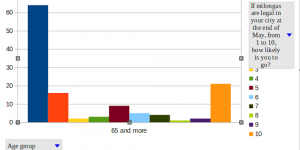
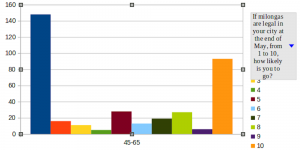
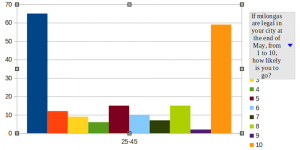
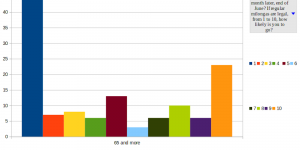
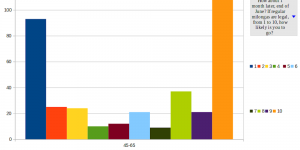
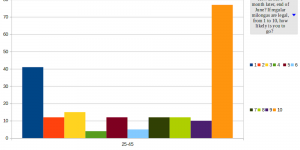
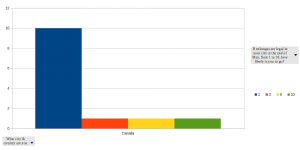
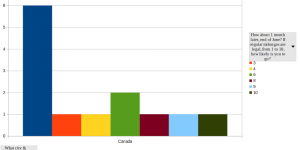
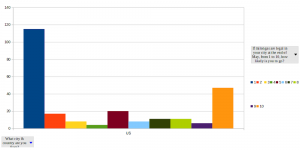
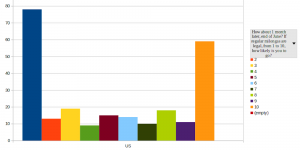

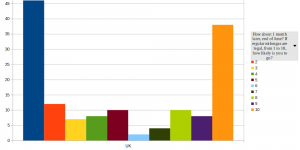

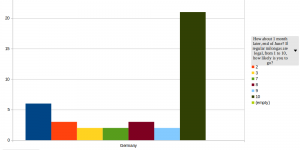
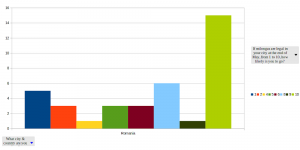
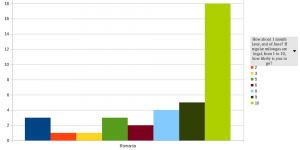
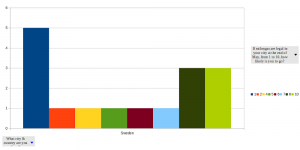
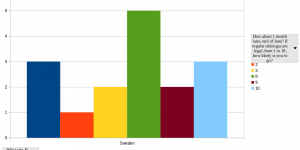
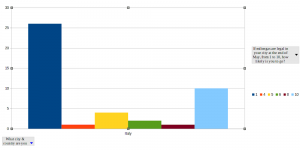
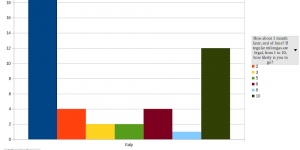
Leave a Reply